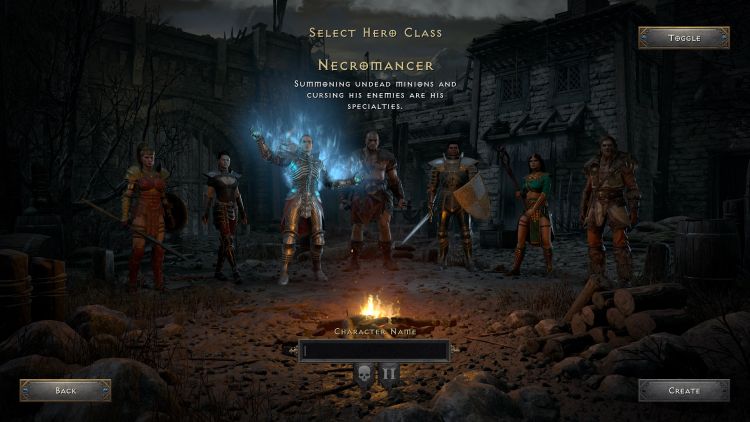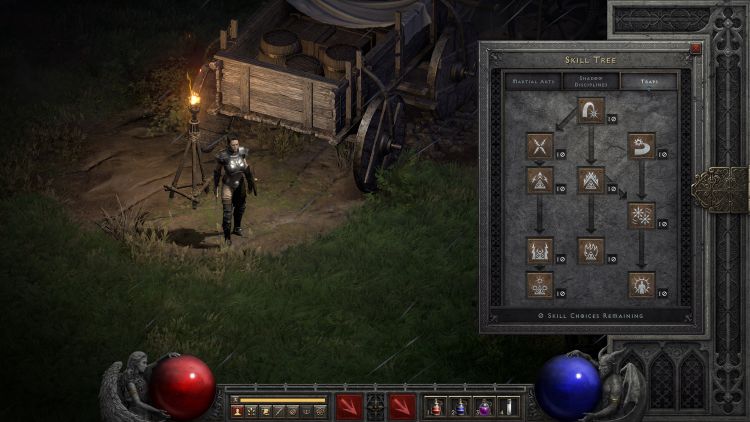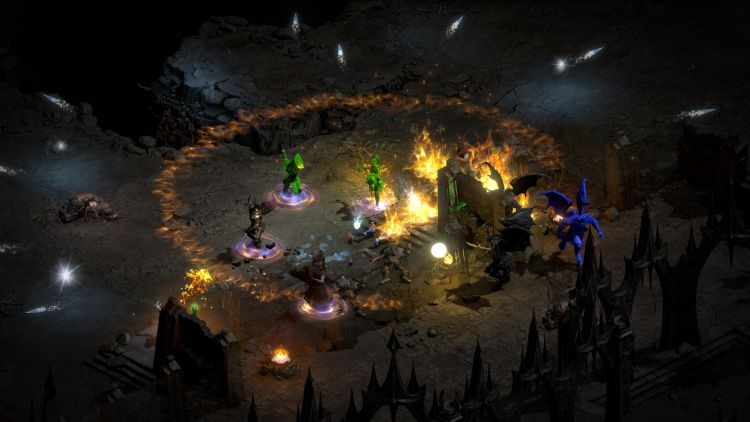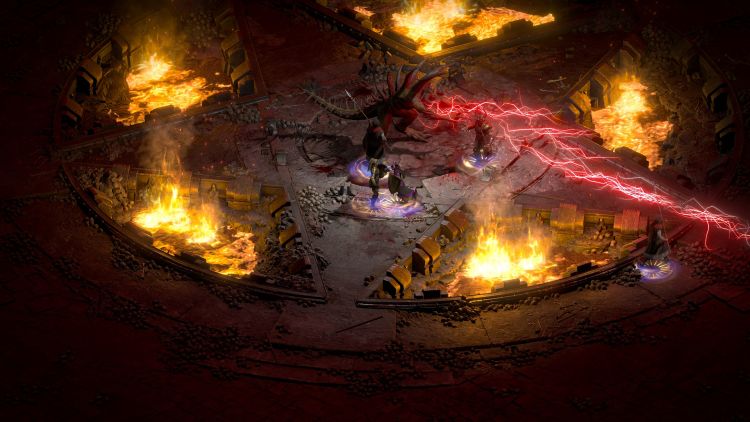Just about everyone knows about Diablo II. It was the original hardcore rogue-like game long before the concept of rouge-like games even existed, Diablo II was the original “loot game” too. But man how times have changed. While Diablo II is remembered fondly by its community and the gaming community at large for being a classic of its era, this new edition, Diablo II: Resurrected, might seem like a resurrection of a very mismanaged franchise, but does it come back to life or should it have stayed dead and buried where it belongs?
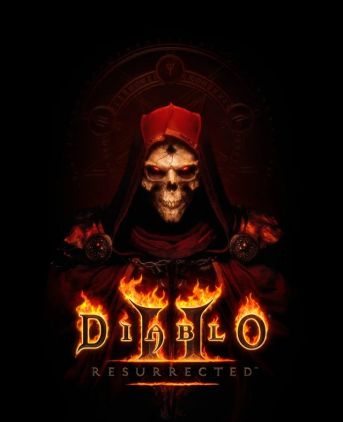 Name: Diablo II: Resurrected
Name: Diablo II: Resurrected
Platform(s): Microsoft Windows, Nintendo Switch, PlayStation 4 / 5, Xbox One/Series X|S
Developer: Blizzard Entertainment / Vicarious Visions
Publisher: Blizzard Entertainment
Game Type: Action role-playing, hack-and-slash
Mode(s): Single-player, multiplayer
Release Date: Out Now
A Journey into the Depths of Hell Itself
I’m going to be really honest about the story of Diablo II: Resurrected. If you played the original Diablo II: Resurrected, then you have played Diablo II: Resurrected. There has been nothing changed from the original 2000’s classic. But if you need a refresher on the story, here it is:
Diablo II takes place after the end of the previous game, Diablo, in the world of Sanctuary. In Diablo, an unnamed warrior defeated Diablo and attempted to contain the Lord of Terror’s essence within his own body. Since then, the hero has become corrupted by the demon’s spirit, causing demons to enter the world around him and wreak havoc.
A band of adventurers who pass through the Rogue Encampment hear these stories of destruction and attempt to find out the cause of the evil, starting with this corrupted “Dark Wanderer.” As the story develops, the truth behind this corruption is revealed: the soulstones were originally intended to imprison the Prime Evils after they were banished to the mortal realm by the Lesser Evils. With the corruption of Diablo’s soulstone, the demon is able to control the Dark Wanderer and is attempting to free his two brothers, Mephisto and Baal. Baal, united with the mage Tal-Rasha, is imprisoned in a tomb near Lut Gholein. Mephisto is imprisoned in the eastern temple city of Kurast.
As the story progresses, cut scenes show the Dark Wanderer’s journey as a drifter named Marius follows him. Marius, now in a prison cell, narrates the events to a hooded visitor. The player realizes that the Dark Wanderer’s mission is to reunite with the other prime evils, Baal and Mephisto. The story is divided up into four acts:
Act I – The adventurers rescue Deckard Cain, who is imprisoned in Tristram, and then begin following the Dark Wanderer. The Dark Wanderer has one of the lesser evils, Andariel, corrupt the Sisters of the Sightless Eye (Rogues) and takes over their Monastery. The adventurers overcome Andariel and then follow the Wanderer east.
Act II – While the adventurers search the eastern desert for Tal-Rasha’s tomb, the Dark Wanderer gets there first. Marius is tricked into removing Baal’s soulstone from Tal-Rasha and the Archangel Tyrael charges Marius with taking the soulstone to Hell to destroy it.
Act III – The Dark Wanderer and Baal look for Mephisto in the Temple of Kurast. Still imprisoned in the dungeon below the temple, Mephisto was able to corrupt the High Council of Zakarum and take over the region. While the adventurers fight their way to the temple, Mephisto is rejoined by his brothers; the three open a portal to Hell, the Dark Wanderer sheds his human form, becomes the demon Diablo, and goes through the portal. The adventurers arrive later, defeat Mephisto, who was left guarding the entrance, and take his soulstone.
Act IV – The adventurers slay Diablo in Hell and destroy the soulstones of Mephisto and Diablo on the Hellforge, preventing their return.After the player successfully ventures into Hell and defeats Diablo in Act IV, upon returning to the Pandemonium Fortress they are met by the Archangel Tyrael with an urgent summons. Tyrael opens a portal to Harrogath, a stronghold on Mount Arreat in the northern Barbarian Highlands. As shown at the end of Act IV, while two of the Prime Evils of Hell, Diablo, and Mephisto, have been defeated and their Soulstones destroyed at the Hellforge, their surviving brother Baal has retrieved his own Soulstone from the narrator Marius. Baal has raised an army and attacked Mount Arreat, whose Barbarian inhabitants are tasked with defending the Worldstone.
There are six quests in Act V. The player starts off at the stronghold of Harrogath. There are also ice caverns in the mountains, as well as hellish subterranean pits (reminiscent of Hell in Act IV) for extra monsters and experience. After reaching the summit of Arreat, the player gains access to the Worldstone Keep.
Many of the folk in Harrogath do not initially trust the player character (even if they are playing as the Barbarian class). The player has to slay Shenk the Overseer who is leading the assault in the Bloody Foothills in order to relieve the siege of Harrogath. The player can also rescue the captured Barbarian defenders. Completing these quests gradually helps the town inhabitants warm to the player and they will provide aid or other services.
The player soon discovers that one of Harrogath’s councilors or Elders, Nihlathak, has made a deal with Baal to spare Harrogath in return for access to the Worldstone Keep. After rescuing Anya and learning of this betrayal, the player has to find and kill Nihlathak, who is sheltered between his minions in the Halls of Vaught.
Before gaining access to the Worldstone Keep, the player must defeat The Ancients, which are the three legendary Barbarians – Talic the Defender, Madawc the Guardian, and Korlic the Protector – guarding the Worldstone who allow only the worthy to pass. After the player succeeds, the Ancients warn that Baal is already into the Keep and has blocked Tyrael’s presence.
Finally, the player fights Baal in The Worldstone Chamber, after defeating his pack of minions at the Throne of Destruction. Tyrael appears after Baal is dead, congratulating the player and opening a portal to Destruction’s End, the conclusion of the game. As the Worldstone is corrupted by Baal, Tyrael has no choice but to destroy it before its power of Hell takes root; the consequences of the Worldstone’s destruction would not be fully known until twenty years later… (aka Diablo III)
As always, the classic Diablo II storytelling is still there, with its grand cinematic set pieces, its long flowing dialogue text boxes (some with voiceovers), and everything you know and probably loved about Diablo II in all its splendor. Remember, this was Blizzard at its peak, with strong narratives and great character moments combined into amazing worlds that would just drag you into them and keep you invested for hours at a time… A long length away from what Blizzard-Activision now puts out there with crappy, and sometimes stolen, storylines in small chunks put out at 6 to 9-month intervals at $25 a month (I’m looking at you World of Warcraft: Shadowlands)
Evil Gets an Upgrade(in graphics)
The whole point of Diablo II: Resurrected is to bring Diablo II into the modern age, and this is something that development studio Vicarious Visions have done extremely well… And also to be expected from the developers who put out the amazing remastering of Tony Hawk’s Pro Skater 1 & 2 not too long ago. As with Tony Hawk’s Pro Skater 1 & 2, Vicarious Visions has given all the love and care to Diablo II: Resurrected that it did with Tony Hawk’s Pro Skater 1 &2. Everything looks to have been given a fresh coat of paint from the cinematics, which looks a million times more realistic than the already impressive cinematics from Diablo II did, to the overall presentation of the world itself.
One of the big things with Diablo II: Resurrected, much like Diablo II, is that every dungeon is procedurally generated, meaning that every time you go into one of these multi-level challenges, the game will change the layout at random, even if you have been to that dungeon before, leading to a different experience every time you venture into the depths. The dedication needed to upscale (or remaster) all of those art assets, with them being over 20 years old at this point, is something that not even the most hardcore fans have been able to achieve, but Vicarious Visions has done it with such a flair and talent that I hope these guys become the go-to developers when any company needs a remaster done, though they are owned by Activision-Blizzard which limits what they can work on.
If you want to understand what an undertaking it was for a project like Diablo II: Resurrected to be done, all you have to do is see for yourself. In one of the weirdest moves I have seen in a remastered video game, Vicarious Visions have programmed a toggle into the game that will revert all of the upscaled 4K graphics (if you have an output for 4K, otherwise enjoy 1080p HD graphics) back to the original graphics from Diablo II, leaving you with a 640×480 pixilated mess of a game to contend with. But this does show you how far we have come in the realm of graphics, but also the dedication put into Diablo II: Resurrected by Vicarious Visions. For those of you who want to see these graphical changes yourself, do the following on your platform:
- G key on a PC
- LT + View on an Xbox
- L2 + Touchpad on a Playstation
- ZL + Minus (-) on Nintendo Switch
Some What Quality of Life Improvements
To say there have been gameplay improvements in Diablo II: Resurrected would be telling a half-lie. While the gameplay in Diablo II: Resurrected is pretty much exactly the same for PC players as it was with Diablo II, people who play the console version do have an interesting and somewhat functional way to play. At its core, Diablo II: Resurrected plays exactly like it did when it was Diablo II, but there are some tiny changes that have been made to the quality of life in Diablo II: Resurrected that the developers have done to make things somewhat easier for players of PC and console. You do go through much of Diablo II: Resurrected doing the same hack and slash actions that you did in Diablo II: Resurrected, complete with the same two-button layout for attacks, having to use one potion at a time, and all that stuff that we got used to back in the day, but some things have been either altered or changed completely to make your adventures through hell a bit more comfortable. Such as:
- Auto-gold pickup and an ‘Auto-fill Belt from inventory’ hotkey
- Emote wheel for faster communication
- Togglable subtitles, including NPC greeting subtitles
- Larger font sizes, colorblind modes, and readability options
- Customizable map opacity
- Volume adjustment across a multitude of audio channels
- Extensive key binding options, including new bindable skills like ‘Interact’ and the ability to swap left and right-stick functionality for controllers
- Cursor sensitivity settings for controllers
- Auto-sort inventory with controllers
- ‘Hold to attack’ and item-name toggling to reduce the number of repetitive clicks or button presses
- Ability to use a controller in the PC version of the game
While many of these are more aimed at making the console players’ playthrough more enjoyable, and let’s face it, easier to play. As someone who was playing Diablo II: Resurrected on the PlayStation 4, I found the changes to the control scheme to be really good, much better than playing on PC like I used to with Diablo II, in fact, I’d actually recommend anyone playing on PC that you give the controller thing a try and see what it feels like for you.
Remember, It’s a Remaster, not a Remake…
While Diablo II: Resurrected appears to have been remastered with love and care, there are still a lot of things from Diablo II that have been carried over to Diablo II: Resurrected that make the experience real pain in the butt, especially for those of us who used to play Diablo II on PC.
I’m going to start with the overall story and gameplay. While Diablo II: Resurrected is just a remaster of Diablo II, there is a missed opportunity to do things like streamlining the story into something more entertaining and shorter, giving it a larger and more dramatic feel. Toning down the number of text walls you are bombarded with throughout the game would help speed things along to the point where you don’t have to throw 200+ hours into Diablo II: Resurrected just for the sake of killing time. Other games can tell twice the story of Diablo II: Resurrected in half the time, and not shortening the story would be a great opportunity that has been missed in Diablo II: Resurrected.
Another section that could have used an upgrade is the overall gameplay. In the 20+ years since Diablo II first came out, there have been a lot of improvements to the system, including everything that helped make Diablo III a success (before Activision-Blizzard abandoned it for mobile game land). Bringing some of those qualities of life improvements into Diablo II: Resurrected would have really helped bring the game into the modern age. Not to mention that there could have been some improvement to the mercenary AI to stop them from being somewhere between dumb as bricks to insanely suicidal in battle, giving them more utility and making them worth using.
Speaking of gameplay improvements, one of the biggest pains in the ass is the skill/spec tree. Diablo II was known for “spec traps”, where choosing the wrong skills will corner you into something that isn’t going to be optimal for the overall gameplay experience. For people who fall into these traps, Diablo II: Resurrected also carries over the terrible “One reset/respec per difficulty level” system, leaving you to grind rare boss monsters and shoving everything into the Horadric Cube to create more. Having an option toggle in Diablo II: Resurrected for unlimited resets/respecs would have been great to help bring new players to Diablo II: Resurrected without needing to go online to research optimal specs to avoid having to reset/respec.
Adding to the overall dated mess that is Diablo II’s gameplay system is the inventory system. Diablo II: Resurrected does very little to combat this problem. While it is great to auto-sort your inventory, it’s still a complicated mess of a system that sees you running back and forth from dungeon to town to either sell up or make space in your personal chest. Not to mention that given how the stats are shown in-game, you’ll need to sit down with an Excel Spreadsheet just to work out if that new sword is an upgrade or a piece of junk. Making the inventory system a more simple system would have helped players work out what they need, not to mention help console players who have a press/hold control layout to work with, leading to accidental selling/dropping of items.
Yeah, I know this is getting long, but hear me out.
One of the most frustrating things that Diablo II: Resurrected could have fixed is the insane amount of bugs that Diablo II had, even after numerous patches over the years. Some of the more annoying bugs, like the infamous “every second hit misses” bug, are still present in Diablo II: Resurrected. You can go online, search up “Diablo II bug list” and you’ll see things like Amazon’s Fend and Druid’s Fury that cause problems in-game, and are still not fixed in Diablo II: Resurrected. There is a huge missed opportunity by both developers to correct all these bugs and more to make sure that Diablo II: Resurrected could be as perfect as possible.
Then there are the problems that no one asked to be changed or “fixed” with a modern version of anything, starting with the Online and Offline system. You can create a character in either mode, but that is it. So choose carefully before making a character, because if you make an Online character, you cannot clone or transfer the character over to the Offline system, and vice-versa. As someone who used to play a lot of Diablo II, where me and my friends would make a character in offline mode, level it up, then jump into online content together and smash things out, or power level someone who is new to the game, or just grind the Secret Cow Level.
Online mode is a whole mess upon itself, with connection issues at random, leading to people losing hours of progress because the Activision-Blizzard servers are about as stable as a house of cards during an earthquake. It would be nice if Activision-Blizzard actually did something that didn’t involve their servers with every little thing they do, except they do the opposite and, for some reason, rely on things like cloud-based servers which are known to fail at the first sight of an incoming packet of data, activating showdown like it was a DoS attack… And the less said about the STUPID idea of removing LAN mode from Diablo II: Resurrected completely the better… Cause as a LAN Diablo II player of many years, seeing this option removed is one of the worst things that Activision-Blizzard could do to Diablo II.
Are You Ready to Return to Hell?
Look, Diablo II: Resurrected is still Diablo II at heart, which is a great game, or else we wouldn’t have a remaster of the game on our hands today. At its core, Diablo II: Resurrected is the same game we all played and loved over 20 years ago. However, there are a LOT of missed opportunities that both Activision-Blizzard and Vicarious Visions could have done to improve a lot of the issues that Diablo II had over 20 years ago. From story and gameplay improvements to the removal of key features like LAN mode on PC that will make Diablo II: Resurrected one of those titles that are hard to recommend, but at the same time you want to recommend.
Diablo II: Resurrected is a game worth playing, but at the same time, I don’t see the value in this remaster. I think everyone needs to experience the story and gameplay of Diablo II, as its one of the classic games of a few generations, and a building block for so many games afterward, however, this remaster is just like Warcraft III, a cheap cash grab based on a popular old property when it should have been something a lot more like a remake to really make it worthy of spending the money.
Review Disclosure Statement: Diablo II: Resurrected was provided to us by Blizzard-Activision (via Australian PR third party) for review purposes. For more information on how we conduct and handle reviews here, please visit our Review Guideline/Scoring Policy for more info. Thank you.
Summary
Diablo II is one of those games where you could recommend till the cows come home, but Diablo II: Resurrected, on the other hand, is one of those remasters where you should expect something more than a fresh coat of paint. Diablo II: Resurrected should have been a game that was a true remaster, fixing the remaining few issues with Diablo II, but instead is another horrible remaster from Activision-Blizzard that removes more than it adds to the overall game and experience.
Pros
- Adding controller option to PC
- Remastered cinematics and graphics are excellent
- It’s Diablo II at its core
Cons
- Missed opportunities to fix gameplay and story issues
- Bugs remain from 20 years ago
- Removal of LAN functions, relying on Activision-Blizzard servers, and no Offline/Online cross-over



